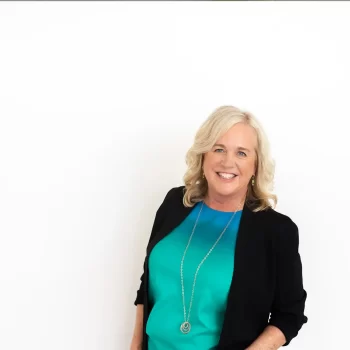How to Create an Effective Marketing Plan in 2024
If you’re trying to create an effective marketing plan in 2024, I’m guessing you’re trying to get more customers or clients. Which is another way of saying you’re trying to generate more revenue. Fantastic!
Introduction to Marketing Plans
But let’s make sure we’re both talking about the same thing. Most of the time when I talk to entrepreneurs about marketing plans, they’re talking about promoting themselves. Things like advertising and asking people to buy stuff etc. But I’m actually talking about a much larger marketing umbrella that encompasses pretty much every part of your company that touches the customer. This includes your product, pricing, and the experience your customer has with your company. Each piece needs to fit together like a puzzle if you want to break through the noise.
But why do you need a marketing plan, what goes in one and maybe most importantly, what are the steps involved in creating one? Get ready for an in-depth exploration in the world of promotion, pricing, product and customer experience.
Your 2024 Marketing Plan Overview
- Why You Need A Marketing Plan
- Benefits of Having a Marketing Plan
- Key Parts of a Marketing Plan
- Creating a Marketing Plan Step-By-Step
- Key Takeaways, Success Tips & Further Resources
Why You Need a Marketing Plan
If you’re trying to get people’s attention and hopefully hold onto it for more than a nanosecond, popping up at random times and saying wherever is on your mind isn’t going to be very powerful. For your customer it’s like you’re asking them to listen to music, watch TV and read a book at the same time. They’re going to be confused and have no idea what it is you actually want them to do (which is buy your stuff).
Benefits of Having a Marketing Plan
I see 3 main benefits of having a marketing plan in 2024:
- Goal setting: Just making the plan is a forcing function for you to take a look at your business from an airplane level. The time you spend thinking about where you want to go and how you want to get there will automatically help you generate new ideas and narrow your focus.
- Effort to Impact Ratio: When you randomly put up a landing page here, a social post there and occasionally send an email to your audience, it’s sort of like elevator music. Your customer’s may notice it in the background, but it won’t be memorable. If you have a marketing plan, you have the chance to strategically coordinate that social post, landing page and email. Done right, this has the potential to more like a Taylor Swift drop.
- Less Stress: You can take a (cognitive) load off. Without a plan, you are always starting from ground zero. With a plan, you pick a goal, map out the path and start hiking towards it. From time to time you can check your progress and reroute if necessary. But it’s not the same lift as starting from the beginning every day.
Key Parts of a Marketing Plan
I. Business goals and objectives
Your marketing plan needs to align with your business strategy. If you’re not sure about your business goals, you should start here. The marketing plan then becomes part of the roadmap on how you’re going to achieve those goals.
II. Target audience
And I promise you this isn’t everyone. You can’t effectively market to everyone. If you’re not sure about your ideal customer or target segment, don’t worry. Getting a handle on that is step one of the process of crafting a business plan. One way you can think about this is to create a customer persona. That’s just a fancy way of saying that you’re going to write down everything you know about the people you think will love your product the most.
III. Competitive analysis
Most marketing plans include a look at the competition. The most important reason for doing this is so you can differentiate your product, service and company. To get noticed today you need to be different. Really, really, remarkably different. Queen Latifah different. Lady Gaga different. And don’t forget that the competition may not just be other companies in your space. The real competition is whatever your customers are doing to solve their problem now.
IV. Market Opportunities
This is sort of a meta section of the marketing plan, but worth spending a little time on. Where do you believe the market is going? Is it growing? Shrinking? Will it be impacted by the emergence of AI? How? What could you do to take advantage of that or mitigate those risks?
V. Marketing Strategy
Now we’re at the fun part of the marketing plan. This is where you think about everything you’ve just learned and put it all together. This is where you integrate product, pricing, promotion and customer experience. This is where you figure out how you will use each of those components to differentiate your brand and position your product or service in the market. One way to create a strategy is to use a process framework and think creatively about what you can use to move your customer closer to purchase and repeat purchase. I like to use the customer journey map.
VI. Marketing Tactics
Marketing tactics are the specific things you’re going to do to reach your target audience and nurture them down the path from finding out about you to buying from you and buying from you again. Some common tactics include email marketing, content marketing, advertising, events, and social media marketing. But remember that marketing tactics also include how you price your product and how customers buy from you. If you want a big list to help you brainstorm marketing tactics, you can download my list of 52 of them here.
VII. Marketing Budget
There are lots of trainings and blogs out there that will tell you that all your marketing can be owned or earned and all your growth can be organic. Yes, it is possible, but it usually very slow. If you want to jump start your growth, you will probably want to allocate some dollars to marketing. Also, don’t forget that your time is a valuable resource and you need to take that into account when thinking about whether it makes sense for you to do something yourself or pay someone else to do it. For more on this, you might want to check out this post about how much time you should spend on marketing. If your not sure how you should value the time you spend on marketing, you might benefit from my workshop/lab class Find Your Ideal Price Point.
VIII. Marketing Metrics
When you’re working on your marketing plan, it’s a good time to think about how you will know if it’s working. Some common ways people measure marketing include website visits, number of emails captured, number of shopping carts completed vs abandoned etc. Your marketing plan isn’t set in stone. It’s a living document. If you look at your numbers and nothing’s happening, make some adjustments and see what happens. For more on marketing metrics you might want to check out 25 Marketing Metrics that Matter. You definitely should not be measuring all of these as a small business. But pick 2-3 that support your goal and go ahead and establish a baseline.
Marketing Plan Prerequisites
Before you open your laptop and start furiously writing your plan I’m going to urge you…beseech you…implore you….to talk to your customers or the people you are hoping to be your customers first. Because no marketing plan survives the first contact with customers. [Hat tip: Steve Blank].
The truth is, most small businesses start marketing too early. Before they’ve created an offer people want to buy.
Key Takeaways
- Your marketing plan is about developing a strategy that supports your business objectives. Otherwise you’re just throwing spaghetti at the wall.
- You need a marketing plan because business growth requires the integration of every part of your company that touches the customer including product, pricing, and their entire experience with your business.
- You need to talk to your target audience (who is not everyone) BEFORE you start marketing to make sure your offer is something they want.
Success Tips
- Set aside dedicated time to work on your marketing plan each week and give yourself 2-4 weeks.
- Your marketing plan doesn’t have to be a novel. It can just be bullet points in each section.
- Remember to stay flexible and adaptable. Your marketing plan is a living document and you can change it whenever you want.
More Marketing Plan 2024 Resources
- 52 Ways to Grow Your Business That Are NOT Social Media
- Find Your Ideal Price Point
- Sign up for The Next Leap Newsletter
- Follow me on insta @thenxtleap
- Create a Customer Avatar in 5 Easy Steps from The Digital Marketer
- How to Get the Most from Your Marketing Budget from the SBA
This post was originally published in 2023 and has been updated for 2024.




